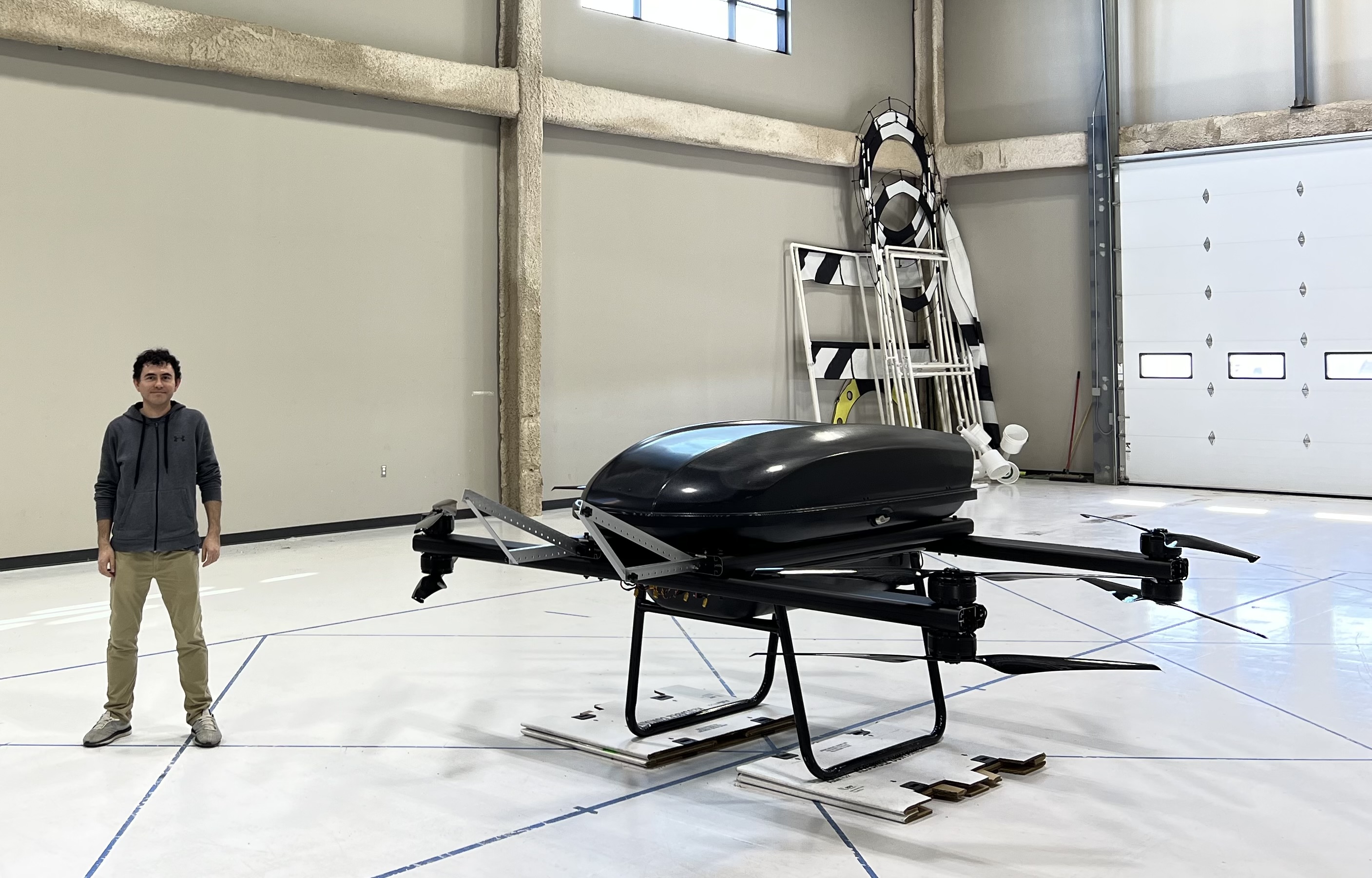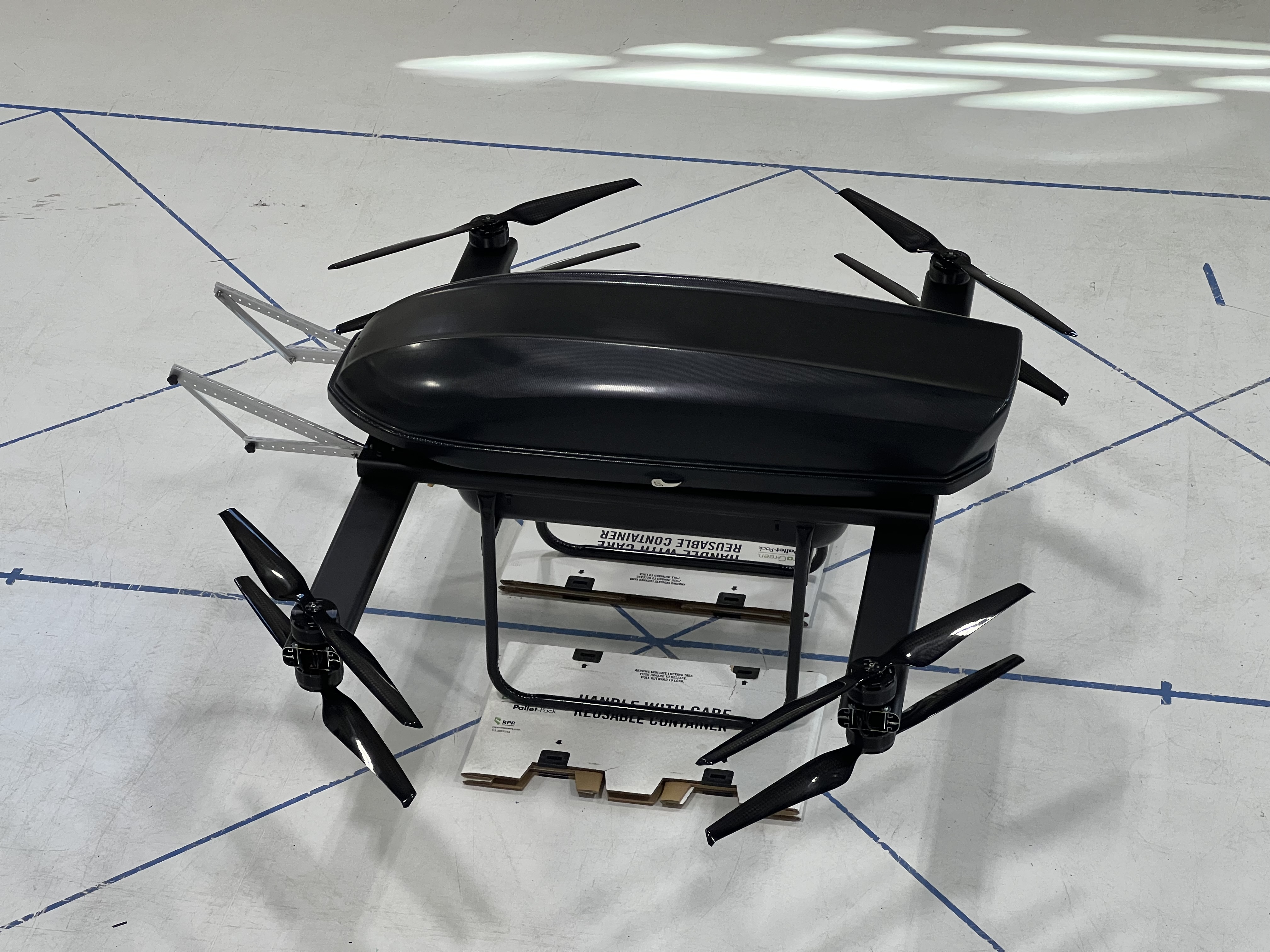David Gonzales II and His Experience Running Multiple Tech Companies
I recently had the opportunity to speak with David Gonzales II, co-founder and CEO of Aerial Vehicle Automation (AVA) and co-founder of Landsat Technologies. David, being at the forefront of two startups, has a great deal of experience in industry and quality insights into the progress of the drone sector within the aerospace industry. I asked David about his two companies, the future of AVA, and any advice he would give to fellow entrepreneurs. His answers and our discussion will be detailed in the following sections.
David took the time to explain his company, Landsat Technologies, and everything they currently offer. He explained that they build “rolling solar powered remote security towers that look like Mars rovers for Earth.” These towers come equipped with surveillance equipment and are "3 times more affordable" than most traditional security trailer systems currently rented elsewhere. The company currently has about 20 units out in the field right now, and they are looking to scale up their sales and rental process and find more clients. The security towers have many different uses and applications including retail, government, and military. "Our main mission is to discourage criminal acts like copper theft, vandalism, and break ins for the clients whose properties we protect," David explained. Landsat Technologies, having only been around since 2023, is rapidly growing and looking to make surveillance more accessible and affordable to businesses who normally couldn't afford this technology.
Shifting gears to AVA, I asked David about the current products that the company is offering. David explained that the company's main product is a large vertical take off and landing drone. This drone can generate up to 1500 lbs of thrust and is capable of “carrying cargo and maybe one day humans.” David’s main goal with the drone, which they call the X8, is to “dramatically reduce the cost of aviation.” AVA is doing this in several ways by analyzing the materials used to build the drone, adjusting the capabilities of the drone, and working with the Air Force to further develop and test the X8. David said the eventual goal of AVA is to create the “Model T of large drones,” making them a cheap and accessible option for the future.
Next, David and I discussed the work AVA is doing with the Air Force. He explained that they had originally received a selection letter in 2019, but due to complications and time constraints, they were ultimately told to try again in the next round. It took a couple more tries, but after teaming up with Wagner & Associates and trueWeather, the collective team eventually was selected for a phase 1 Small Business Technology Transfer Grant (STTR). After phase 1 concluded, they were further selected to develop their product in phase 2, receiving more funding and time to modify and test the drone with the University of North Dakota. David then went more in-depth on the actual mission they are working on with the Air Force. The drone is “carrying heavy meteorological instruments to look for icing in clouds before sending in a manned aircraft,” which is much more expensive and risks lives without knowing all the details. Due to the low price point of the drone compared to traditional helicopters, there is a lot of potential for future applications of the X8. David explained that their “heavy lift drone is at least 10 times cheaper than flying a traditional helicopter per hour and is designed for mass production."
After learning about AVA’s current work, I asked David what industries he was looking to target with their drones. David explained that their current focus is the weather mission within the Department of Defense (DoD), but they are also “interested in any missions involving cargo and logistics within the DoD.” The X8 can provide a cheaper, less risky method to transport medical supplies, water, food, ammo, fuel, mail, and anything else currently transported and moved by manned helicopters. The drone provides many capabilities with different levels of maneuverability and aggressiveness due to its unmanned, autonomous nature. Outside of the DoD, AVA is looking to expand into markets outside of the US that have fewer flight regulations on large-scale drones by supplying their drones to already established companies. Finally, David explained that they are also interested in delivering cargo for the oil and gas industry. They are able to provide cheaper services than traditional hotshot companies while also delivering necessary components at a quicker rate.
To cap off our discussion on AVA, I asked David about his future goals and visions for the company as a whole. David answered by stating that AVA is aiming to be “the mass production large drone company.” Due to their cheap nature and quick production times, AVA stands out over a lot of their competitors’ drones, offering price points as much as 10 times cheaper than leading competitors. AVA is looking to supply companies already involved with cargo and logistics, allowing them to save money by switching from helicopters and other aircraft. David also hopes that AVA can become a long-term supplier within the DoD for their cargo and severe weather missions. Finally, David explained that he sees the cost of their drones coming down even more from where it is now—one day being “comparable to an automobile.” This would be a significant development in the industry and could catapult AVA into being a supplier for many major corporations that have transportation needs.
As the co-founder of two different startups, I asked David about the biggest challenges he has faced and how he has overcome them. David said that “money is always an issue when first getting started,” something he has realized throughout his time in the startup industry. It can be hard to gather external investments at the start, but it is important to “find where the early opportunities are.” Through investments from the former Yahoo VP of Sales and contracts with the Air Force, AVA has overcome many of the early financial woes. David also explained that working with the DoD has its own challenges as well. There are many procedures and requirements that need to be met, but with enough work and due diligence, a working relationship is achievable. Lastly, David said one of the biggest challenges is “balancing your time between product development and investors.” While both of these are key components to a successful startup, it is important to not focus too much on either one of them, as a balance is necessary in order to find true success.
To end the interview, I asked David what advice he would give to aspiring entrepreneurs looking to make an impact in their industry. He said one of the biggest things he can relay is that you “can’t give up.” A large part of success is in doing the things that unsuccessful people don't want to do. Even when it gets hard or you get rejected, you need to keep fighting and pushing in the right direction, because sometimes all it takes is time and perseverance. David also explained that in many situations “doing” is better than planning. While it is good to have a plan, not every plan you make is going to work; you can spend your whole life on analysis, but at some point, you just need to go do it and make it happen.
Learning about Landsat Technologies and AVA was a great experience, and I am thrilled to have had the chance to sit down with David and hear about his role in the companies. From remote security towers to large-scale drones, I am looking forward to staying in touch with David and seeing what his companies accomplish in the future.


